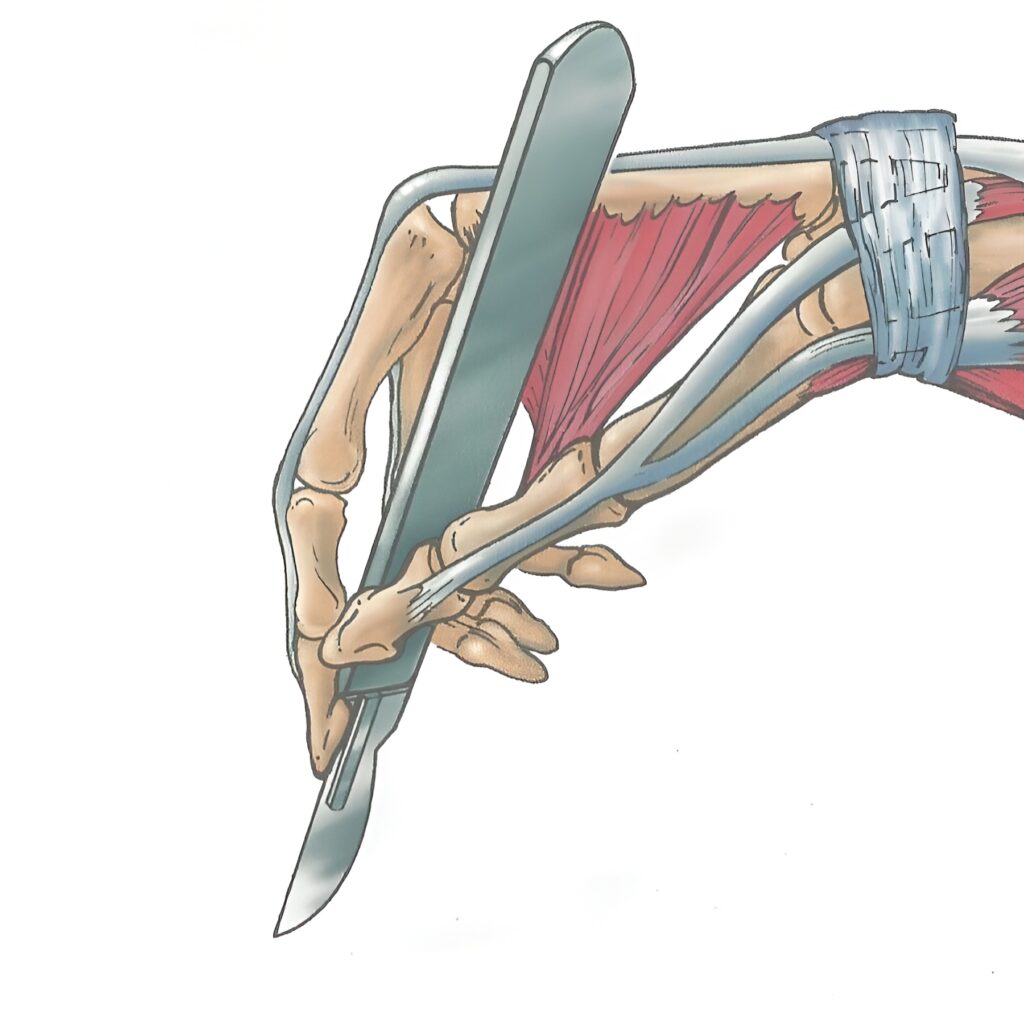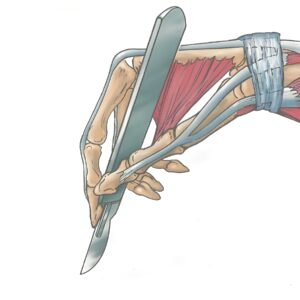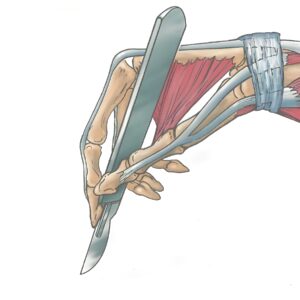
Anatomy of CT scans: Abdomen
- September 15, 2025
- 2:19 pm
Summary
Review of axial abdominal CT anatomy covering abdominal wall layers, wall muscles, vertebrae, key bones, major vessels (aorta, IVC, portal vein), hepatic portal system, and peritoneum. Organs discussed include liver, gallbladder, pancreas, spleen, kidneys, bladder, stomach, duodenum, and intestines, with emphasis on identifying key landmarks, vessel branches, and structural relationships seen in CT images.
Raw Transcript
[00:00] Okay, we're going to talk about the anatomy of axial CT scans and focus on the abdominal region right now. We're going to go over abdominal wall, abdominal wall muscles, the cardiovascular system, the peritoneum, and abdominal organs. And all of these are the structures that if you just add up all the labs we've had on the abdomen, I've just put them all into one place.
[00:20] place of the structure list of the stuff that I'm going to cover. So when we take a look at this, we're going to start with basically abdominal wall. We've got Campers' fascia, which is all this dark tissue here. This is actually fat. All in this area there is the Campers' fascia. If we go down, we're going to see that the skin and the
[00:40] Campers Fasha is going to do something kind of cool. Watch it's going to go, whoops, I'm going the wrong way again. Um, like that. See that? How cool that is. Like that there's your umbilicus right there. Okay. Where the umbilicus comes in. And so if we actually.
[01:00] follow the internal surface of the umbilicus up. You're going to see the liver in this upper quadrant. Watch the connection between the umbilicus and the liver. Okay, one more time. There it is. So that is actually the round ligament and part of the fulsiform ligament of the liver that separates right and left ligaments.
[01:20] lobes and you see it going all the way up into that umbilicus. It's kind of cool. That's the falsiform ligament and that round ligament. Now let's talk about the different vertebrae that we're going to see lining this thing. You follow this rib back, you follow the ribs. We know that's a thoracic vertebrae because it's articulating with the rib. We come down and the ribs disappear.
[01:40] So you're like, oh, these are lumbar vertebrae. How else do you know they're lumbar vertebrae? You got these big mammillary processes and they're segmented. And then we go all the way down and we see these ilium and we're going to have this bone right here. That's the sacrum and there's the sacroiliac joint right there. It's the SI joint. It's actually a synovial joint. It just doesn't move a ton. Okay.
[02:00] So there's the sacrum. And then we're going to go over just basically the normal structures that we did before. So when we come back up, we're going to see, okay, there is the, let me get a different view of this. So let's go up here and say, all right, there is a spinous process, and there's a transverse and a transverse process. Okay. The lamp.
[02:20] on either side of this. There's the vertebral canal, big vertebral body with spongy bone, and there's a pedicle and there's a pedicle. So if we go and move, you're going to see the pedicle disappear because that's an intervertebral or neuroforamen. We go down and we can see the oscoxia that's going to be forming here right there.
[02:40] There is the oscoxis, specifically three bones, ilium, ischium, and pubis. That's the ilium that articulates and makes the SI joint. And if we continue down, we're going to see the head of the femur pop up over here like that. Oh, that's so cool when I see that. There's the head of the femur and there's the greater trochanter. And it makes that ball and socket joint.
[03:00] joint of your hip. There's the ball and socket, the acetabulum of the oscoxia and the head of the femur make your ball and socket joint. Watch what happens. We see this bone that goes anteriorly. That's the pubis that makes the pubic symphysis. Then this one over here, this is the ischium in the ischial tuberosity.
[03:20] right there. Okay, so now let's go to the abdominal wall muscles. Okay, so as I'm scanning back up we're going to see that abdominal wall. We're going to see those three layers that we dissected so nice or that you saw so nicely in the anatomy lab. Okay, so let's get those we can see. There we go.
[03:40] external oblique, external oblique, internal oblique, transverse abdominis. There's our rectus abdominis in the front with the linea alba that's right in the middle, connecting the two. If we continue up, we're gonna see the diaphragm. Now the diaphragm and the liver are kind of hard to tell apart because they both are kind of like the same grayness.
[04:00] So we come down, that is diaphragm right there, but we're getting into the liver as well. So what I do is I follow this muscle out right there, okay? And there's the right and left crura of the diaphragm. Okay? And then we're going to see this psoas major muscle right here get bigger and bigger and bigger and just see it
[04:20] getting bigger as I'm going down, that whole thing, big circle is the psoas major muscle. Going back up, psoas, psoas, psoas major muscle. It's coming from the vertebral bodies and transverse process of the lumbar vertebrae. And then we have this quadratus lumborum. Now the quadratus lumborum is basically coming from the transverse processes.
[04:40] There's our quadratus lumborum muscle right there. Okay? And then our iliacus, to see the iliacus, we find the iliac bone and in the iliac fossa right here, there's our iliacus. And the other thing I can tell with the iliacus is it's going to then form wonder twin powers with our psoas. So we follow the psoas down. You see it getting closer to the iliacus.
[05:00] the iliacus. Once they go under the inguinal ligament, these two become the iliopsoas musculature, the big hip flexors for us. Alright, let's go to the cardiovascular system now, shall we? And let's talk about the aorta. So I'm going to go back up and we're going to see right in the ventral part of the vertebral body.
[05:20] To the patient's left is the abdominal aorta. To the patient's right is the inferior vena cava. Okay? So if we follow this abdominal aorta all the way up, we're going to see the coming off. So we're now, there's our left and right lungs. So let's follow the abdominal aorta. We're going through the diaphragm right now.
[05:40] And you can see a little atherosclerosis, I think that's atherosclerosis right there. You come, we're going to see, you see that little thing that comes off? If I had more slices between each one, we'd see more. But that's the ciliac going off, okay? Now watch. There is now the SMA because they're so close to each other.
[06:00] there's the superior mesenteric artery coming out. And I know that because the SMA course is over this left renal vein. And so if I follow that vein over to the left kidney, it goes between the SMA and the aorta going to the IVC over here, okay? And so now let's take a look at a
[06:20] renal artery to do that, I find the kidneys. I find the kidneys and then I see where the aorta is and then I just follow that little, there's the renal artery going into the hilum of the kidney. It's the right renal artery and there's the left renal artery coming over.
[06:40] Next, there are common iliac arteries. So let's follow, let's scan down, follow this abdominal aorta down, down, down, down, and what you're going to see happen is we get down right by the, where the L5 meets S4. Watch what this does. Shing, you see that? That abdominal aorta
[07:00] bifurcated into the right and left common iliac artery. Now let's follow the left common iliac artery, common iliac, because you know it's going to eventually branch. You see that? One more time. And there's the external and internal iliac arteries. And we know this is external.
[07:20] because it's going towards the inguinal region. And we know the other one is the internal because it's now headed down towards the pelvic cavity. Alright, so next let's talk about the hepatic portal system. The hepatic portal system is basically where the portal vein is.
[07:40] is. And so I find our liver right here, okay? And so I'm coming up and then you're going to see this big vessel going in, this big vessel. That's the portal vein right there. You see the portal vein going into the different lobes of the liver. There's our portal vein and the portal vein forms from the SMV, the superior mesenteric,
[08:00] vein which is right beside our superior mesenteric artery. They're both thickest thieves right there, the superior mesenteric vein. But it's also going to be so the superior mesenteric vein forms from the splenic vein with the splenic vein to form the hepatic portal vein. So look at this. You see that splenic vein coming
[08:20] over to our spleen. So there's the splenic vein forming with the superior mesenteric vein to form the hepatic portal vein. And then the hepatic vein, so what happens is the portal vein goes in and percolates through hepatic sinusoids.
[08:40] and then as we go to the top of the liver, there's the inferior vena cava. Okay, now let's follow that inferior vena cava up. Inferior vena cava is we're going up, inferior vena cava, inferior vena cava, inferior vena cava, and you see these veins coming and dumping into the IVC. These are hepatic veins that come in.
[09:00] into the IVC. So blood comes in through the portal vein from the gut tube into the paddic sinusoids only to then collect. You see all these veins collecting to go into the IVC just right here. Next, if we kept going up, we'd go into the right atrium. Now the
[09:20] IVC, let's follow this IVC down, inferior vena cava. So we're going to follow this down. So there is our abdominal aorta, there's the inferior vena cava, and let's find our renal veins, shall we? So there's our kidney, and there's the IVC, and so I just find the hilum of the kidney and I follow vessels from there to there.
[09:40] IVC to the vein. So that's a renal vein on the right and let's follow the left renal vein over here. Okay, the left renal vein to the kidney, the left renal vein comes out and then the left renal vein goes right between the superior mesenteric artery and the aorta. That's what makes that potential nutcracker syndrome. Left renal vein goes into the IVC.
[10:00] Okay. Wonderful. Now let's follow the IVC down to the iliac's. Following, following, following, we're gonna see does the same thing. As soon as we get down... Okay, see that one more time. IVC, IVC, IVC. Now we have the right and left com...
[10:20] common iliac. So let's follow that right common iliac vein becomes the internal iliac and external iliac vein. Cool? Following it up to the inguinal region. Yeah, it's kind of cool. The peritoneum though, so the parotidem and visceral peritoneum you don't actually see, but I just wanted to point out where
[10:40] be because the parietal peritoneum lines the internal surface of the body walls where parietal peritoneum is and visceral peritoneum is on the outside of, like here's intestine and you see visceral peritoneum, you don't see it, you just have to imagine visceral peritoneum being on the outside of it and the space between the
[11:00] Gut tube with visceral peritoneum and the body wall of parietal peritoneum is the peritoneal cavity. I mention that because in patients who have ascites with lots of fluid, that's where you're going to see the fluid build up. And then the fulsiform ligament, I think I pointed already, found where the left and right lobes of the liver
[11:20] are and we follow that all the way out to the linea alba where the umbilicus is going to be such a cool thing. I just love it. Okay. There it is again. Okay. Next is the abdominal organs like where our stomach is and so here's our liver and there's where the stomach
[11:40] is going to be in this patient and now where the duodenum is going to be. So there's a couple of ways I find the duodenum. Okay and I'm going to show you, and this one is actually, I found it a little bit harder for me because here's the right lobe of the liver and the left lobe and there's our gallbladder. Okay and the gallbladder that makes bile and so I just watch it's going to dump
[12:00] to the duodenum. So there's our duodenum right there. That's our second part of the duodenum. And how do I know it? Because you can see where the bile duct is going to dump into it. So this is the second part of the duodenum. Another thing that makes it so it's kind of cool to be able to see is the following. There's our SMA and there's the SMV. And then we see right here.
[12:20] between the SMA and the aorta is where the third part of the duodenum courses as well. Now if we go up, I'm going to do something I'll show you how I sometimes orient myself to my friendly faces. I find my aorta and as I come down I see there's my ciliac trunk coming off and then there's the SMA coming off.
[12:40] And so what I do is I find that because right in the area, and then also I should say I find my splenic vein. And how do I know where my splenic vein is? Well, let me find my portal vein, which is right here. And then I find the splenic vein, which is right there.
[13:00] in the splenic vein coming into the SMV, which then goes into the portal system. What I do is I find that and what you're going to notice is right where the SMV and the SMA are, the pancreas just wraps right around it. So there's our pancreas wrapping right around that. The pancreas.
[13:20] deep to the stomach. The other thing I want to point out is, so I talked about liver, talked about the gallbladder, talked about the pancreas, and our spleen is in the patient's upper left quadrant. This organ right here is the spleen. You can see this right in the hilum where the vessels are coming in and out. There's the spleen, there's the right kidney and the left kidney.
[13:40] Right kidney, left kidney. Alright. And then our urinary bladder is if we go all the way down to the pelvis where we can see the pubic bones and pubic symphysis, we're going to see, right there is our bladder, okay? The urinary bladder and there's the pubic bone and now watch the urinary bladder as we come up.
[14:00] kind of cool. There is the uracus, the median umbilical ligament going up is kind of cool. Alright, and yeah, I think that's everything. Oh and then so I meant to talk about, yeah, the testine, sorry. So when you see big air bubbles like this, the bigger air bubbles are going to be inside.
[14:20] like that's a big belch waiting to happen. But when we get down we're gonna see like the this is showing intestines and I'm not going to make you distinguish between the different parts of the intestine, but we know up here in this area is probably going to be jejunum and down here is going to probably be ilium.
[14:40] And that these are probably large bowel with hostra right here. And there's our transverse colon going across with the different hostra. That's probably flattest inside there or eventually going to be flattest. But I'm not going to make you distinguish between those. Alright everyone, so there is
[15:00] basically an overview of the abdominal CT anatomy we've covered.


